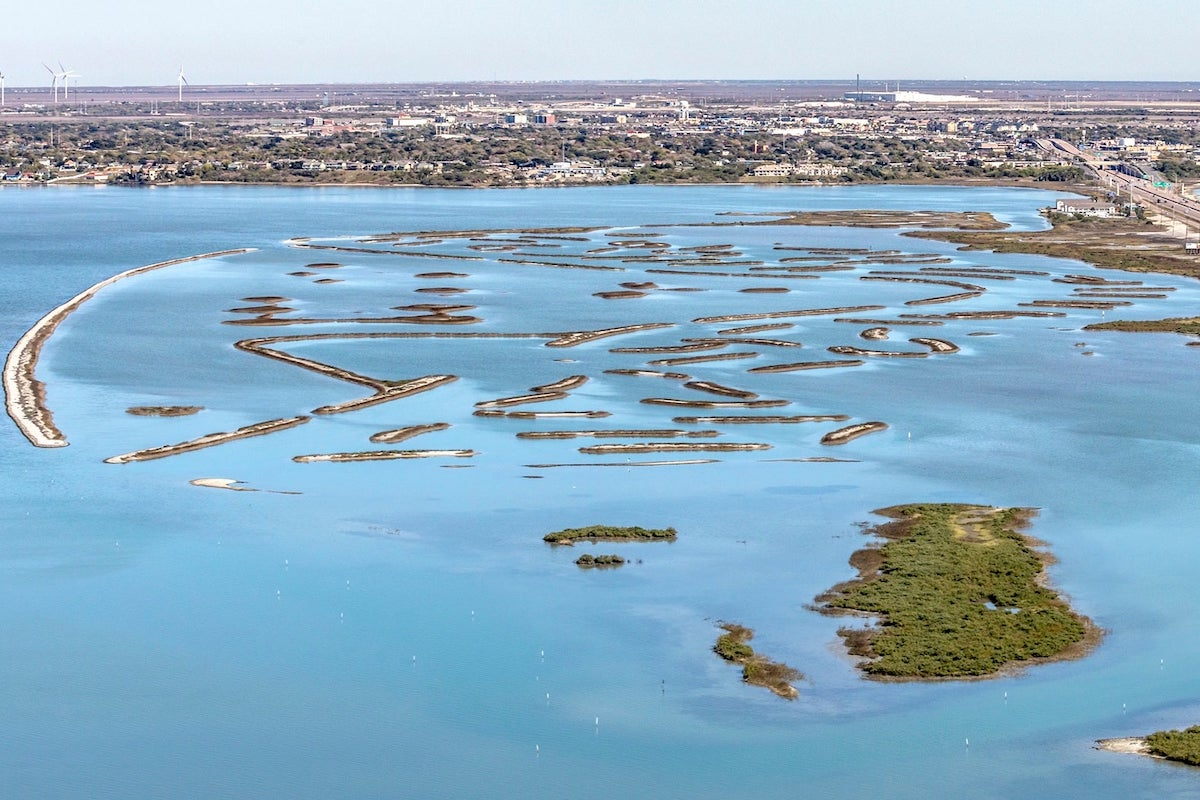Main Street Terminal 1 is the largest of the 20 projects on the Port of Beaumont’s Capital Improvement Program. The original 100-year-old dock at the Main Street Terminal collapsed in 2012, with the original concrete slab sliding into the water due to pile corrosion. This required demolition of the entire dock, with portions of the dock remaining underwater with near zero visibility. McCarthy first needed to remove everything directly on and just below the subsurface mudline before installing the new dock in the old dock’s footprint, as any underwater obstructions would have hindered pile driving installation.
To establish what exactly was underwater, McCarthy utilized divers as well as an unmanned survey vessel, enabling them to maneuver safely and efficiently. Once the area had been surveyed, McCarthy used punches, demolition tools that could be dropped into the water to break up the debris into more manageable pieces before removal. The punches included a 40-foot pile with a steel tip that could strategically be driven into the old dock to break it up, without creating excess debris under the water.
“This project brought multiple unique challenges for our team, including navigating the demolition with limited visibility and addressing unexpected obstructions, but we were able to execute our work efficiently with zero recordable safety incidents and five months ahead of schedule,” said Robert Wood, Project Director for McCarthy.
The new dock is 1,200 feet long and 130 feet wide, with a larger section in the middle measuring 152 feet wide. Its construction consists of concrete piles, cast-in-place concrete caps and beams, precast concrete deck panels, and a concrete topping slab. McCarthy self-performed all concrete and pile installation, as well as utility installation including water and sewer.

| Your local Link Belt dealer |
|---|
| Nueces Power Equipment |
| Central Texas Equipment |
With an opportunity for a complete redesign of the terminal, sustainability and resiliency were top of mind for the Port of Beaumont. Key building elements included concrete piles that provide a corrosion-resistant foundation for extended resiliency, and a final concrete topping slab constructed using synthetic concrete reinforcing fibers, as opposed to traditional welded steel wire mesh. This reinforcing material provides a corrosion resistant surface, which will slow deterioration. The new fender system includes an energy-absorbing component to reduce loads on the dock, which will extend the useful life of the new dock.






































































